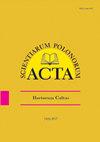不同植物发育阶段收获对海松生产的影响
IF 0.7
4区 农林科学
Q4 HORTICULTURE
引用次数: 0
摘要
2019年和2020年,在土耳其的Eskisehir生态条件下,研究了牛膝草(Hyssopus officinalis L.)的产量和质量特征,这些特征取决于植物发育阶段。实验采用随机完全区组设计,共3次重复。研究的发育阶段为开花前、开花开始、完全开花和开花后阶段。采收期对各参数的影响非常显著(p≤0.05),鲜草和干叶+花的产量在开花后达到最大。然而,干叶+花产量在盛花期和花后期之间没有观察到显著差异。另一方面,全花期的精油含量(0.93%)和精油产量(24.01 L ha–1)较高。牛膝草精油的主要成分为:皮诺(38.41–41.85%)、异皮诺(22.73–22.99%)和β-蒎烯(7.92–8.94%)。从高干叶+高花产量、高精油含量和高产量的角度来看,在牛膝草开花期收获是一种合理的策略。本文章由计算机程序翻译,如有差异,请以英文原文为准。
THE INFLUENCE OF HARVESTING APPLIED AT DIFFERENT STAGES OF PLANT DEVELOPMENT ON Hyssopus officinalis L. PRODUCTION
The yield and quality traits of hyssop (Hyssopus officinalis L.) depending on the plant developmental phases were investigated under Turkey’s Eskisehir ecological conditions in 2019 and 2020. The experiment were conducted in randomized complete block design with 3 replications. The developmental stages examined were before-flowering, beginning of flowering, full flowering and after flowering stage. The effect of harvest times on examined all parameters was very significant (p ≤ 0.05). The maximum yields of fresh herb and dry leaf + flower were obtained from after-flowering stage. However, no significant difference was observed between full flowering and after-flowering period for dry leaf + flower yield. On the other hand, the essential oil content (0.93%) and essential oil yield (24.01 L ha–1) in the full flowering stage were found to be higher. The main components of hyssop essential oil were as follows: pinocamphone (38.41–41.85%), isopinocamphone (22.73–22.99%) and β-pinene (7.92–8.94%). Maximum pinocamphone content was observed in the before-flowering period. To harvesting in full flowering of hyssop plant can be a reasonable strategy in terms of high dry leaf + flower yield, essential oil content and yield.
求助全文
通过发布文献求助,成功后即可免费获取论文全文。
去求助
来源期刊
CiteScore
1.30
自引率
14.30%
发文量
61
审稿时长
4-8 weeks
期刊介绍:
In Acta Scientiarum Polonorum Hortorum Cultus we publish original research papers and review articles containing new and significant information on broad aspects of horticulture and related disciplines. The papers are published in English only, in six issues yearly.

 求助内容:
求助内容: 应助结果提醒方式:
应助结果提醒方式:


